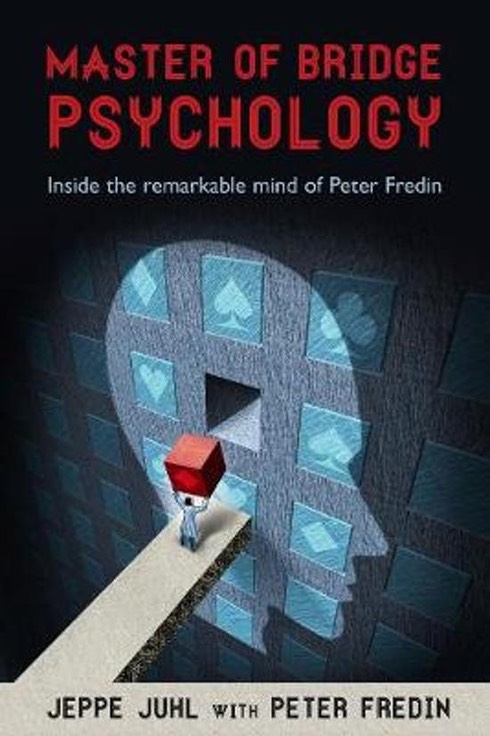Yes, I know the common expression is “look what the cat dragged in” but in our household, it really is “look what the dog dragged in”. The youngest member of the household being Deena, a now 11 month old Labrador who has the habit of taking everything in her month, carry it around for a bit, then drop it in some random place. That isn’t particulary helpful when this involves things like a parcel in the mail, a shoe, a bidding box or whatever. Well, they say it will wear off with time. Meanwhile, she has taken on bridge, after the wife left a bidding box open on the edge of the table, though her bidding is still chaotic. The dog’s that is, not the wife’s.
Despite all attempts to the contrary, 3 interesting items appeared on my desk last week. But first, 2 problems. You are in 3NT at IMP’s, after south opened a weak 2♠, pass from partner and 3♠ from north. Your 3NT call closed the auction and south leads the ♠5 (3rd and 5th) and you win. On the first round of diamonds, west will contribute the ♦J. Plan the play.
1♣ was either a weak NT or a strong hand, 2♠ showed hearts and a game force and the rest was natural. You lead the ♣2 (4th best), 5, Q, A. Declarer returns the ♣4 and it is your turn.
So what did land on my desk? First, the official book on the 15th edition of what is currently known as the World Bridge Series. The event started out as the World Pairs Olympiad in 1962, over the years various other events were added and the name changed a couple of times. Nowadays, the Open Pairs (as well as mixed, seniors and women’s events) are still being played at this event, though the Rosenblum cup open teams seems to have become the most important event at the World Bridge Series.

Last year’s event was played in Orlando and, as usual, the WBF publishes a book with all major action some 8 to 10 months later. 415 pages of bridge. Of course, with most matches being broadcasted on the Internet and sites like http://www.bridgedailybulletins.nl most of the important deals have been published already, so it it makes it less of an interesting read than before, but still it is nice to have all material and results in one place for future reference.
Or is it? The chapter on the Rosenblum cup ends with “[the match] ended with the finalle score ZIMMERMANN 241 - LAVAZZA 162”, which suggests that the Zimmermann team won the event. This may have been correct at the time the last board was played, the result was changed into a win for Lavazza in February of this year, when the WBF release this press statement after Zimmermann player Geir Helgemo had been found guilty of violating the anti-doping rules. Regardless what you think about this matter, it does seem a little strange to then publish a book in June without mentioning any of this. It cannot be the timing, typesetting and printing a book like this is nowadays a matter of weeks, so there was ample time to add a paragraph to explain this, and change the results everywhere. Now we have a book listing the wrong winners when it was known all along that they weren’t the winners. Surely that cannot be what was intended for the book with the official results.

The defensive problem is from another book that had been on my reading list for a while. “Master of Bridge Psychology” by Jeppe Juhl. The book is about Peter Fredin, a Swedish player who is known for is unconventional and imaginative plays, which sometimes work with spectacular results.
♣2, ♣5, ♣Q and ♣A, declarer returns the ♣4 and it is your turn. Before you play the ♣J, consider this layout of the club suit:
If partner ducks, you win the trick but no return looks really attractive. Besides that, declarer can now ruff a club establishing the ♣9 which isn’t a good thing. Finally, you prefer partner to be on lead at trick 3. So, you duck, and declarer claims an impossible contract when the full layout turned out to be this instead:
The ♣10 won the trick, declarer played the ♥AK and discarded a diamond on the ♣A for 10 tricks, winning a bunch of imp’s when the same contract went down in the other room.
Note the timing: trick 2, when nobody has had a chance to signal anything. It also cannot cost, if west goes up with the ♣J, declarer will later discard a diamond loser on the ♣K, leaving him in pretty much the same position as before.
The book is full with examples like this, and also a few disasters when things didn’t quite work out as planned. It is not a textbook or a manual, you cannot learn these situation by heart, but it does give you an idea of what you can do if you want to try this yourself. Of course, no guarantees whatsoever on your rate of success.
“Master of Bridge Psychology’” by Jeppe Juhl has been published by Master Point Press and is available from booksellers around the world. ISBN 978-1-77140-046-6.
And, finally, I kibitzed a practice match between the Dutch U21 and a team from Nijmegen. The former team is preparing for the European Championships in Norway next month. As expected, the U21 bid to the limit and the number of doubled contract was a couple of orders of magnitude higher than any event I’ve seen over the years. While the U21 team generally did play well, they missed this textbook play.
In 3NT, you need 2 spade tricks, 4 diamonds and 3 hearts. That requires the ♥K to be onside and the diamonds 3-2 either way or 4-1 onside with the ♦Q, J or 10 singleton offside. In the latter case, you must be able to play a diamond from dummy towards your ♦A9 at some point.
So, with that in mind, win the opening lead with the ♠K, cash the ♦A (♦J, 3, 4) and play a small diamond to the ♦8 and ♦10. West will show out on this round, but you are in full control. East returns a spade, win in north and run the ♥Q, unblocking the ♥J, and the ♥10. Finally, take a marked finesse in diamonds. Note that covering with the ♥K won’t help EW either. Note that you should not win the opening lead in dummy and start on hearts, as you cannot handle a 4-1 diamond split then.
So much for this week.
